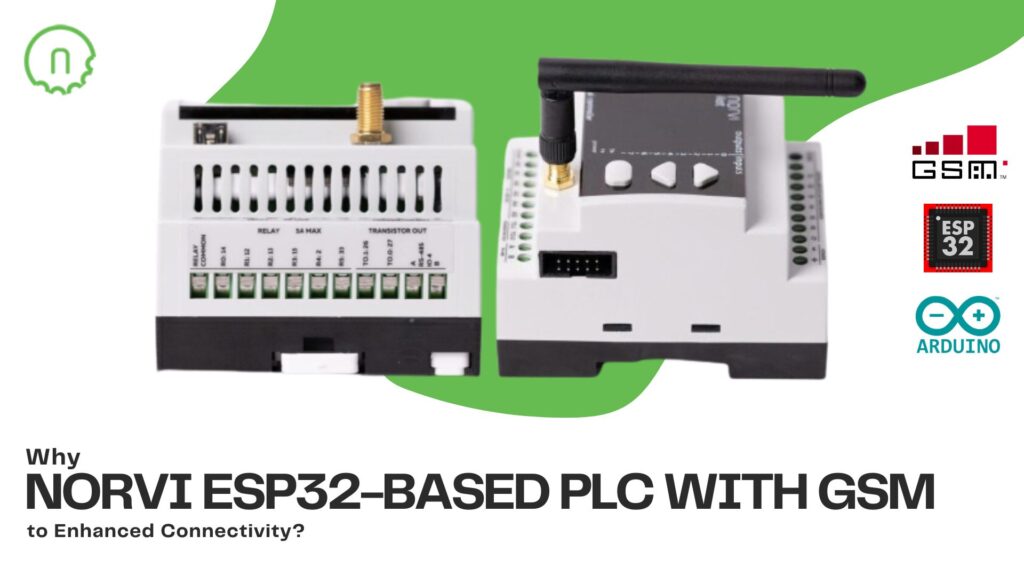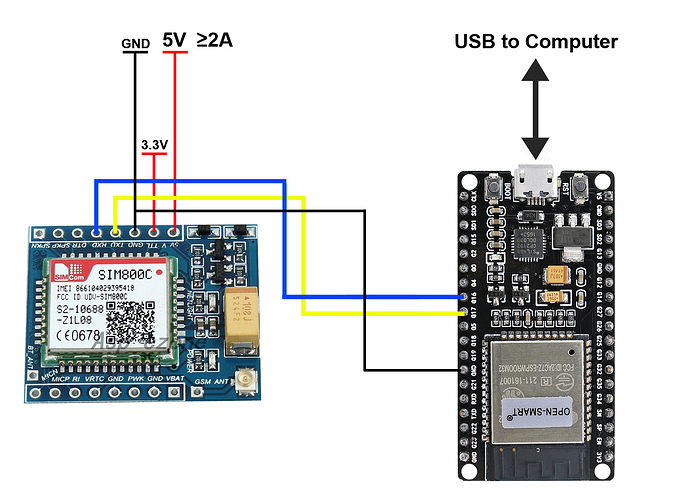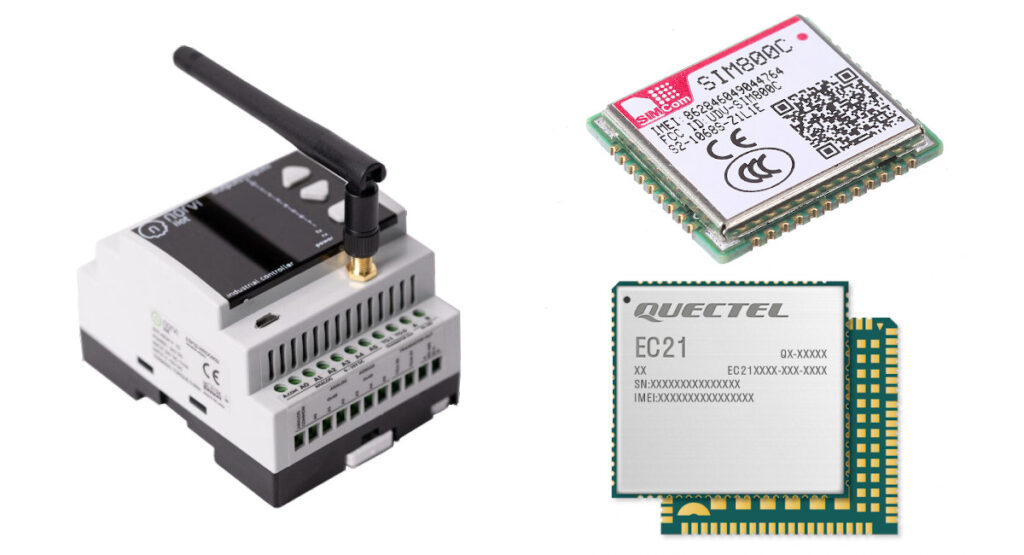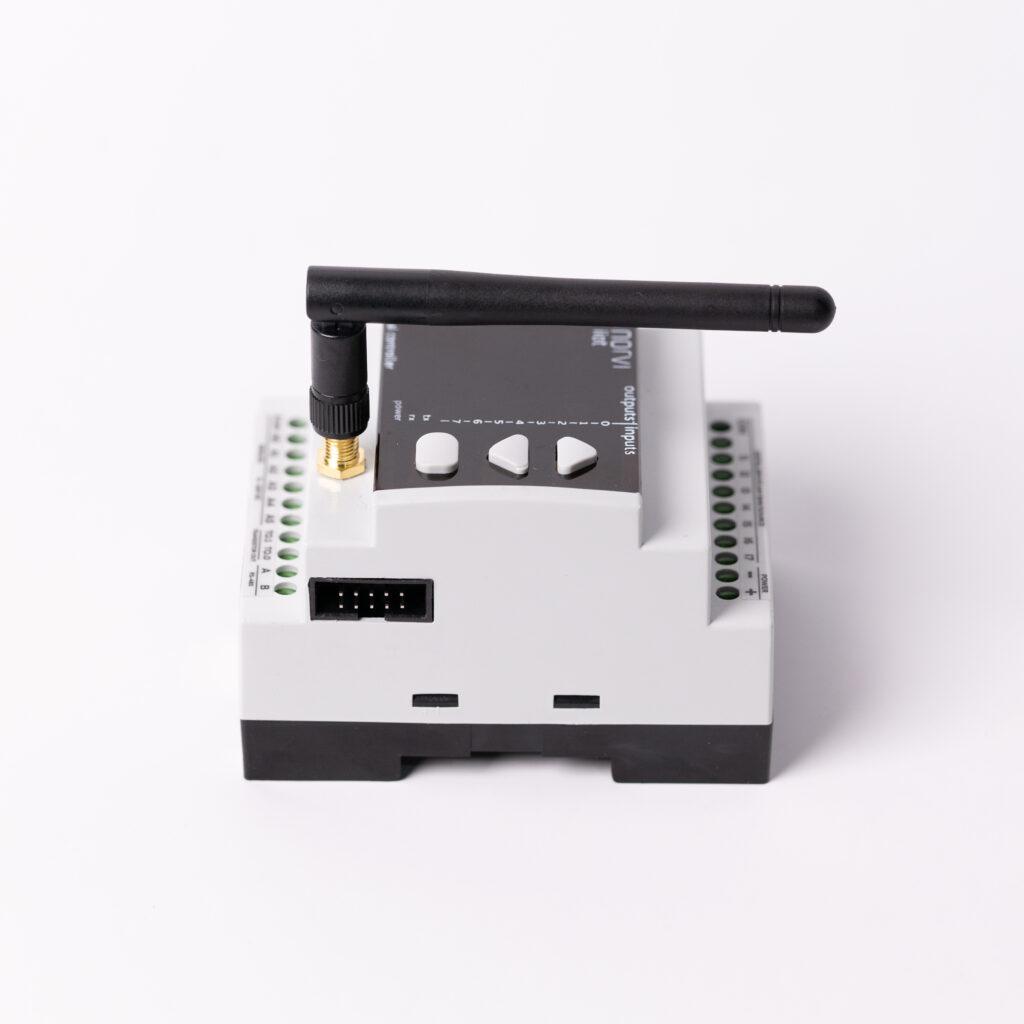
Discover GSM connectivity’s pivotal role and its integration in PLCs, and How ESP32-based PLC with GSM stands out. Explore More through this article.
What is GSM Connectivity?

GSM, or Global System for Mobile Communications, is a standard technology used in mobile devices to facilitate communication through cellular networks. It’s a prevalent wireless communication standard used by mobile phones, tablets, and other devices to transmit voice and data.
Here are some key aspects of GSM connectivity:
- Communication Standard: GSM is a widely adopted standard for digital cellular networks. It sets the protocols for transmitting voice calls and data over mobile networks.
- Coverage and Reach: GSM networks have extensive coverage globally, providing connectivity across various regions and countries. This wide coverage enables devices using GSM technology to communicate in many parts of the world.
- Voice and Data Transmission: GSM enables the transmission of both voice and data. It supports voice calls, SMS (Short Message Service), and data transmission for internet access, emails, and other applications.
- SIM Card Technology: GSM networks use SIM (Subscriber Identity Module) cards to identify and authenticate users on the network. SIM cards store user information such as phone number, contacts, and other subscription details.
- Security Measures: GSM incorporates security measures like encryption to protect communications between devices and the network, ensuring confidentiality and preventing unauthorized access to data.
- Evolution to Advanced Technologies: While GSM laid the foundation for mobile communication, newer technologies like 3G, 4G (LTE), and 5G have evolved from it, offering faster data speeds and improved capabilities while maintaining backward compatibility with GSM networks.
Key Features of ESP32-based PLC with GSM

An ESP32-based PLC with GSM features represents a cutting-edge solution at the intersection of embedded systems and industrial automation. This innovative combination harnesses the power of the ESP32 microcontroller and GSM connectivity to create a versatile and highly capable automation platform.
Key features are as follows:
- ESP32 Microcontroller: The ESP32, renowned for its robustness and versatility, serves as the core processing unit of the PLC. Its dual-core architecture, low power consumption, and built-in Wi-Fi and Bluetooth capabilities offer a solid foundation for industrial automation applications.
- PLC Functionality: Equipped with GPIO pins, analog and digital input/output interfaces, and support for various communication protocols, the ESP32-based PLC functions as a programmable logic controller. It facilitates the control, monitoring, and automation of industrial processes and machinery.
- GSM Connectivity: The integration of GSM capabilities allows the PLC to communicate over cellular networks. This feature enables remote access, data exchange, and control functionalities, empowering users to manage and oversee industrial systems from distant locations.
- Remote Monitoring and Control: Leveraging GSM connectivity, users can remotely monitor real-time data, receive alerts, and exert control over industrial equipment or processes using mobile devices or computers connected to the GSM network.
- Data Exchange and Communication: The GSM functionality enables seamless data exchange between the PLC and external systems or servers, facilitating communication for reporting, analysis, and decision-making purposes.
- Enhanced Flexibility and Accessibility: The combination of ESP32-based PLC with GSM offers enhanced flexibility and accessibility, allowing for efficient management and optimization of industrial operations, regardless of geographical constraints.
Applications of ESP32-based PLC with GSM

The EESP32-based PLC with GSM offers a myriad of applications across various industries and scenarios due to its versatile capabilities. Some notable applications include:
- Industrial Automation: Utilized in manufacturing plants, factories, and production lines for controlling machinery, managing processes, and monitoring equipment remotely. It aids in optimizing production efficiency and reducing downtime.
- Remote Monitoring and Control: Deployed in remote or unmanned sites, such as in agriculture for irrigation systems, weather monitoring, and livestock management. It allows users to monitor and control operations from afar remotely.
- Smart Agriculture: Used in precision agriculture for tasks like soil monitoring, irrigation control, and crop management. The PLC with GSM enables real-time data collection and analysis for better decision-making.
- Infrastructure Management: Applied in infrastructure settings like utilities (water, gas, electricity), where remote monitoring and control of critical systems or installations are crucial for maintenance and operational efficiency.
- Environmental Monitoring: Employed in environmental monitoring systems for collecting data on air quality, pollution levels, weather conditions, and more. The GSM connectivity enables real-time data transmission and analysis.
- Mobile Asset Tracking: Utilized in logistics and transportation industries for tracking and managing mobile assets such as vehicles, containers, or equipment. The GSM connectivity enables real-time tracking and management regardless of location.
- IoT Integration: Integrated into IoT ecosystems for data acquisition, integration with cloud platforms, and building scalable IoT solutions across various domains.
- Energy Management: Applied in energy management systems for monitoring and controlling power distribution, renewable energy systems, and smart grid applications.
- Security and Surveillance: Used in security systems for remote surveillance, access control, and alarm systems where real-time monitoring and notifications are vital.
- Healthcare Monitoring: Applied in remote healthcare applications for monitoring patients’ vital signs, collecting medical data, and enabling telemedicine services in remote areas.
These applications showcase the versatility and adaptability of ESP32-based PLC with GSM connectivity across diverse industries, enabling remote access, data exchange, and control functionalities crucial for efficient and advanced automation solutions.
Why NORVI GSM?

ESP32-based PLC with GSM is now available with NORVI. In the realm of devices like NORVI controllers equipped with GSM connectivity, this technological integration serves as a pivotal enabler, empowering industrial automation systems to establish seamless communication across expansive cellular networks.
This transformative capability extends far beyond mere connectivity, bestowing upon these controllers the profound ability to facilitate remote access, bidirectional data exchange, and dynamic control functionalities. Through the convergence of NORVI controllers with GSM technology, a paradigm shift emerges, allowing users, irrespective of geographical constraints, to engage with and oversee industrial operations and machinery.
This breakthrough offers an unprecedented level of flexibility and responsiveness, as users harness the potential of their mobile devices or computers tethered to the omnipresent GSM network, thereby orchestrating efficient management and interaction with industrial systems and machinery positioned across disparate locations.
Here are the main features of NORVI ESP32-based PLC with GSM;
- ESP32-WROOM32: This is a powerful and widely used microcontroller module manufactured by Espressif Systems. The ESP32-WROOM32 integrates the ESP32 chip, which is a dual-core microcontroller with integrated Wi-Fi and Bluetooth capabilities. It’s known for its versatility, low power consumption, and ample processing power, making it popular in various IoT applications, including home automation, industrial automation, wearable devices, and more.
- SIM800L: SIM800L is a highly compact and versatile GSM/GPRS module designed for mobile communication. It allows devices to connect to cellular networks, enabling functionalities like making/receiving calls, sending/receiving SMS messages, and data transmission over the GPRS network. The module is commonly used in IoT projects, such as GPS tracking devices, remote monitoring systems, and other applications that require cellular connectivity.
- The SIM7500: This is a cellular module developed by SIMCom Wireless Solutions. It’s designed to provide cellular connectivity with support for various wireless technologies, including LTE (4G), WCDMA (3G), and GSM (2G), offering high-speed data transmission and communication capabilities. The module supports functionalities such as making and receiving calls, sending and receiving SMS messages, and establishing data connections over the LTE network.
These components, when integrated into devices or systems, provide connectivity solutions, allowing communication over different types of networks (Wi-Fi, Bluetooth, GSM, GPRS, LTE), thereby enabling a wide range of functionalities and applications in the IoT and industrial sectors.
However, NORVI ESP32-based PLC with GSM has an LTE option that comes with it. It will explore through another article for you. Just visit the product page for more information here.
Conclusion
In conclusion, the ESP32-based PLC with GSM connectivity represents a groundbreaking advancement in the realm of industrial automation. As a cornerstone of mobile communication, GSM technology provides a global standard for voice and data transmission, offering extensive coverage, robust security measures, and a foundation for evolving technologies like 3G, 4G (LTE), and 5G.
The fusion of the ESP32-based PLC with GSM connectivity in PLCs creates a versatile automation platform. This integration allows for remote access, data exchange, and control functionalities, empowering users to oversee industrial systems from distant locations.
Key features like the ESP32’s robustness, PLC functionality, and GSM connectivity enable real-time monitoring, seamless data exchange, and efficient management of industrial operations, transcending geographical constraints, while the applications of ESP32-based PLCs with GSM span various industries which showcase the adaptability and versatility of these systems, offering remote access, data exchange, and control crucial for advancing automation solutions.
Notably, devices like NORVI ESP32-based PLC with GSM, epitomize this transformative integration. NORVI controllers equipped with GSM technology empower industrial automation systems to establish seamless communication across expansive cellular networks. This convergence goes beyond mere connectivity, enabling bidirectional data exchange, dynamic control functionalities, and unprecedented flexibility for users, regardless of geographical constraints.
In essence, the integration of ESP32-based PLCs with GSM connectivity heralds a new era in industrial automation, where users can efficiently manage and interact with industrial systems and machinery positioned across disparate locations, leveraging the potential of ubiquitous GSM networks. This breakthrough offers unparalleled flexibility, responsiveness, and efficiency in overseeing and managing industrial operations, marking a significant stride in the evolution of automation solutions.
ESP32-based PLC with GSM is now available to buy: Visit the page
#norvi #ESP32 #PLC #GSM #LTE #IndustrialAutomation #IoT #AnalogInputs #Relayoutputs #digitalinput #RemoteControl #SmartManufacturing #IoTDevices #TechInnovation #Connectivity #ethernet #SmartPLC #Industry40 #WirelessControl #RealTimeMonitoring #SmartTech #AutomationTech #Industry4_0 #IoTDevices #SmartControl #DigitalTransformation #RealTimeControl #WirelessAutomation #SmartIndustry #IoTSolutions #ConnectedDevices #TechInnovation #DataAcquisition #EfficientAutomation
